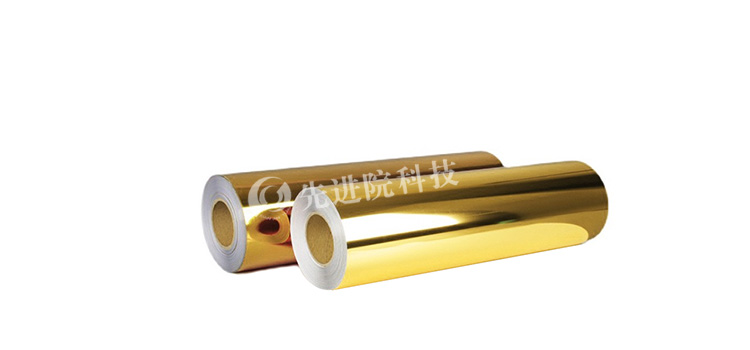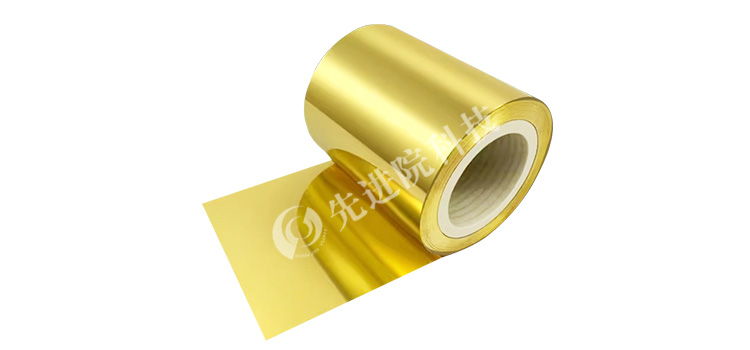

Hotline:0755-22277778
Tel:0755-22277778
Mobile:13826586185(Mr.Duan)
Fax:0755-22277776
E-mail:duanlian@xianjinyuan.cn
PI (Polyimide) Gold Plated FilmIt has a wide range of applications in various fields such as electronics, aerospace, etc. Different gold plating processes will have different effects on the performance of PI gold plating films. This article will focus on comparing the differences in the performance of PI gold plating films between two common gold plating processes, magnetron sputtering and electroplating, and refer to themAdvanced Institute (Shenzhen) Technology Co., LtdAnalyze relevant research data.
PI materials have excellent characteristics such as high temperature resistance, chemical corrosion resistance, and mechanical properties. Gold plating on their surface can further improve their conductivity, corrosion resistance, and other properties, thereby meeting more complex engineering requirements.
By comparing the application of magnetron sputtering and electroplating processes on PI gold plating films, the impact of each on film performance is clarified, providing reference for selecting suitable gold plating processes in related fields.
Magnetron sputtering is a type of physical vapor deposition (PVD). It is achieved in specialized vacuum equipment by introducing a magnetic field on the surface of the target cathode and using the magnetic field to constrain charged particles to increase plasma density and sputtering rate. When magnetron sputtering gold plating on PI, the PI film is sent into a vacuum chamber equipped with a magnetron cathode and sputtering gas (such as argon gas). Negative voltage is applied to the cathode, and glow discharge is carried out in the vacuum chamber to generate plasma. The gas ions in the plasma are accelerated and bombard the gold target material, causing gold atoms to deposit on the surface of PI to formGold-plated film.
Electroplating is an electrochemical process. existElectroplating PI gold plating filmFirstly, the surface of PI should be cleaned, and then a bottom layer should be plated (such as using nickel or copper as the anode and the object to be plated with PI as the cathode, dissolving the anode through the current in the electrolyte to form a bottom layer on the surface of PI to enhance the adhesion and flatness of the gold plating layer). Then, metal gold should be used as the anode and PI as the cathode, dissolving the gold from the anode through the current in the electrolyte and plating it on PI to form a gold plating layer.
| workmanship | adhesion | Uniformity of film thickness | Conductivity |
|---|---|---|---|
| Magnetron sputtering | Strong (tape peeled off 10 times, detachment area<10%) | Good (film thickness deviation within ± 0.1 μ m) | Excellent (block resistance<0.1 Ω/□) |
| plating | Weak (tape peeled off 10 times, with a detachment area of 20% -30%) | Difference (film thickness deviation of about ± 0.3 μ m) | Slightly inferior (block resistance 0.2-0.3 Ω/□) |
By comparing the performance of PI gold plating film using magnetron sputtering and electroplating processes, it can be seen that magnetron sputtering process generally performs better than electroplating process in terms of adhesion, film thickness uniformity, and conductivity. However, the electroplating process also has its own advantages, such as relatively low equipment costs. In practical applications, the appropriate gold plating process should be selected based on specific needs, such as emphasis on membrane performance, cost, and other factors. Meanwhile, the relevant research data from Advanced Institute (Shenzhen) Technology Co., Ltd. provides important reference for us to deeply understand the impact of these two processes on the performance of PI gold plating films. Further in-depth research is needed in the future to optimize the application of these two processes in the preparation of PI gold plating films.
The above data is for reference only, and specific performance may vary due to production processes and product specifications.

Advanced Institute (Shenzhen) Technology Co., Ltd, © two thousand and twenty-onewww.avanzado.cn. All rights reservedGuangdong ICP No. 2021051947-1 © two thousand and twenty-onewww.xianjinyuan.cn. All rights reservedGuangdong ICP No. 2021051947-2